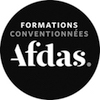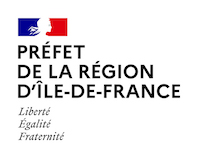Fabrice Ramalingom
Masterclass · Fabrice Ramalingom
Lundi 4 au vendredi 8 avril 2022
11h - 17h
Tarif organisme : 750 euros
Tarif individuel : 260 euros
Pour candidater et pour toute information sur les possibilités de financement : envoyez votre dossier (CV, lettre de motivation, portrait et photo de plain-pied) à masterclasses@atelierdeparis.org.
→ Télécharger la fiche de contenu pédagogique.
Comment être pleinement conscient de ce que l’on est sur un plateau et responsable de ce qu’on y fait ?
Ces deux questions seront le fil conducteur pour la Master Class que je conduirai à l’Atelier de Paris, durant laquelle il sera question du savoir-faire/savoir être du danseur/danseuse dans la composition chorégraphique.
Pour cela, je partagerai et transmettrai des outils que j’ai pu acquérir tout au long de ma carrière auprès de chorégraphes comme Dominique Bagouet, Trisha Brown, Simone Forti… Ces outils permettent de répondre à la notion de responsabilité et d’autonomie du danseur ou de la danseuse considéré.e ainsi comme créateur/créatrice, bâtisseur/bâtisseuse face aux enjeux de la composition chorégraphique, le/la conduisant à être plus précis/précise dans son positionnement, dans son mouvement et plus clair/claire dans ses intentions.
Pour un meilleur usage de soi dans ce travail, la préparation du matin sera un temps d’exploration qui prendra appui sur un ensemble de techniques de danse (release technic, body weather, …) et de techniques somatiques (relaxation coréenne, massage thaï, …).
Équipe artistique
Fabrice Ramalingom
Fabrice Ramalingom étudie de 1986 à 1988 au Centre national de danse contemporaine à Angers alors dirigé par Michel Reilhac, puis débute sa carrière de danseur-interprète au Centre chorégraphique national de Montpellier. Il y travaille de 1988 à 1993 à toutes les pièces de Dominique Bagouet, chorégraphe français emblématique réputé pour le raffinement de son écriture et dont l’oeuvre reste majeure dans le paysage chorégraphique français.
Il dansera également dans ONE STORY, as in falling, pièce créée pour la compagnie Bagouet par Trisha Brown en 1992. En 1993, il est membre fondateur des carnets Bagouet, cellule de réflexion et de transmission des oeuvres du chorégraphe disparu. Parrallèlement démarre l’aventure de La Camionetta, compagnie qu’il co-fonde avec Hélène Cathala. En treize ans ensemble au sein de cette structure, ils chorégraphient 11 pièces et seront artistes associés à l’Équinoxe Scène nationale de Chateauroux, au théâtre de Nîmes, puis à la Scène nationale de Sète et du Bassin de Thau.
En 2002 à Montpellier, La Camionetta expérimente le collectif en s’associant à deux metteurs en scène et deux chorégraphes pour créer et diriger Changement de propriétaire, lieu alternatif de production et de création qui ouvrira à nombre de projets transdisciplinaires, résidences, performances et formations. La spéculation immobilière et les problèmes de voisinage auront raison de ce rêve qui en appelle d’autres. Celui de Fabrice sera d’ouvrir une nouvelle porte de son histoire. Fin de La Camionetta.
En 2006, il fonde la compagnie R.A.M.a. où chaque projet est l’occasion de s’ouvrir à d’autres médiums et à faire appel à des contributeurs issus de contextes culturels différents. Les quinze pièces qu’il a signé depuis les débuts de R.A.M.a. sont autant d’espaces ouverts et tendus, capables notamment de réfléchir et nourrir des pensées sur des paradoxes qui lui sont chers, tels l’homme/l’animal, l’individu/la communauté, la présence/l’absence… Dans le même temps, son travail s’ancre dans un territoire.
Il est ainsi en 2008 et 2009, artiste en résidence dans le département de l’Aude, premier artiste associé à L’Agora cité Internationale de la danse à Montpellier en 2010, puis artiste associé au CDC / Festival Uzès Danse de 2012 à 2015. Il est artiste associé à l’Agora, cité internationale de la danse à Montpellier pour la saison 2017/2018. Fabrice est également réputé pour son engagement dans la transmission et la pédagogie sous toutes ses formes (formations professionnelles, interventions dans les universités, dans les centres chorégraphiques, master-classes, conférences dansées, stages et ateliers en direction de professionnels ou d’amateurs). En 2005, il est conseiller artistique pour la formation EX.E.R.CE du Centre chorégraphique national de Montpellier.
Nos partenaires


English version
How can you be fully aware of who you are on a stage and responsible for what you do there?
These two questions will be the guiding thread for the Master Class I will lead at the Atelier de Paris, during which it will be a question of the dancer’s know-how in choreographic composition.
To do this, I will share and transmit the tools that I have acquired throughout my career with choreographers such as Dominique Bagouet, Trisha Brown, Simone Forti and others. These tools allow me to respond to the notion of the dancer’s responsibility and autonomy, who is considered a creator or a builder within the stakes of choreographic composition, leading them to be more precise in their positioning, in their movement and clearer in their intentions.
To make the best use of oneself in this work, the morning preparation period will be a time for exploring based on a set of dance (technical release, body weather, etc.) and somatic techniques (Korean relaxation, Thai massage, etc.).
Fabrice Ramalingom studied from 1986 to 1988 at the Centre national de danse contemporaine in Angers, then directed by Michel Reilhac, and then began his career as a dancer-performer at the Centre chorégraphique national de Montpellier. From 1988 to 1993, he worked on all of the pieces created by Dominique Bagouet, an emblematic French choreographer renowned for the refinement of his writing and whose work remains a major part of the French choreographic landscape. He also danced in ONE STORY, as in falling, created for the Bagouet company by Trisha Brown in 1992. In 1993, he was a founding member of the Carnets Bagouet, a think tank for transmitting the late choreographer’s work. At the same time, he started the adventure of La Camionetta, a company he co-founded with Hélène Cathala. Working together for thirteen years in this organisation, they choreographed 11 pieces and were associated artists at the Équinoxe Scène nationale de Chateauroux, at the Théâtre de Nîmes, then at the Scène nationale de Sète et du Bassin de Thau. In 2002 in Montpellier, La Camionetta experimented with collective work by joining forces with two directors and two choreographers to create and direct Changement de propriétaire, an alternative production and creation space that would open up to a number of trans-disciplinary projects, residencies, performances and training. Real estate speculation and neighbourhood problems were drivers behind the dream of working with others in this way. Fabrice’s dream would be to open a new door in his personal history. That was the end of La Camionetta.
In 2006, he founded the company R.A.M.a. where each project was an opportunity to work with other mediums and to call on contributors from different cultural backgrounds. The fifteen pieces he created since the beginning of R.A.M.a. are open, tense spaces, capable of reflecting and enriching thoughts on certain paradoxes that are dear to him, such as man/animal, individual/community, presence/absence… At the same time, his work is anchored in a local area and substance. In 2008 and 2009, he was artist in residence in the Aude department, the first artist associated with L’Agora Cité Internationale de la danse in Montpellier in 2010, and then associate artist of the CDC / Festival Uzès Danse from 2012 to 2015. He was an associate artist at the Agora, Cité internationale de la danse in Montpellier for the 2017/2018 season. Fabrice is also renowned for his commitment to sharing and teaching in all its forms (professional training, classes in universities and choreographic centres, master classes, dance conferences, workshops and courses for professionals or amateurs). In 2005, he is artistic advisor for the EX.E.R.CE training of the National Choreographic Centre of Montpellier.